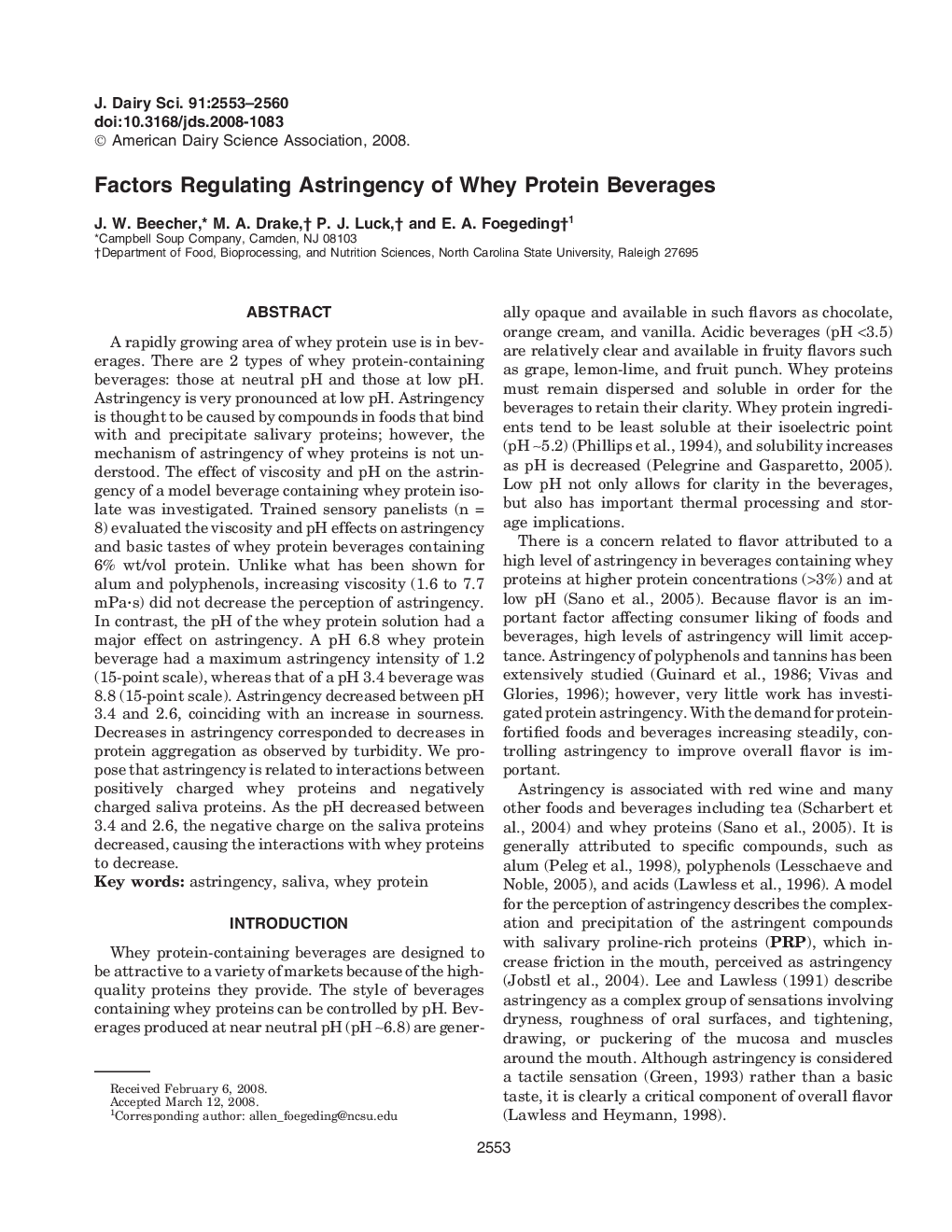| Article ID | Journal | Published Year | Pages | File Type |
|---|---|---|---|---|
| 2439894 | Journal of Dairy Science | 2008 | 8 Pages |
Abstract
A rapidly growing area of whey protein use is in beverages. There are 2 types of whey protein-containing beverages: those at neutral pH and those at low pH. Astringency is very pronounced at low pH. Astringency is thought to be caused by compounds in foods that bind with and precipitate salivary proteins; however, the mechanism of astringency of whey proteins is not understood. The effect of viscosity and pH on the astringency of a model beverage containing whey protein isolate was investigated. Trained sensory panelists (n = 8) evaluated the viscosity and pH effects on astringency and basic tastes of whey protein beverages containing 6% wt/vol protein. Unlike what has been shown for alum and polyphenols, increasing viscosity (1.6 to 7.7 mPa·s) did not decrease the perception of astringency. In contrast, the pH of the whey protein solution had a major effect on astringency. A pH 6.8 whey protein beverage had a maximum astringency intensity of 1.2 (15-point scale), whereas that of a pH 3.4 beverage was 8.8 (15-point scale). Astringency decreased between pH 3.4 and 2.6, coinciding with an increase in sourness. Decreases in astringency corresponded to decreases in protein aggregation as observed by turbidity. We propose that astringency is related to interactions between positively charged whey proteins and negatively charged saliva proteins. As the pH decreased between 3.4 and 2.6, the negative charge on the saliva proteins decreased, causing the interactions with whey proteins to decrease.
Keywords
Related Topics
Life Sciences
Agricultural and Biological Sciences
Animal Science and Zoology
Authors
J.W. Beecher, M.A. Drake, P.J. Luck, E.A. Foegeding,
